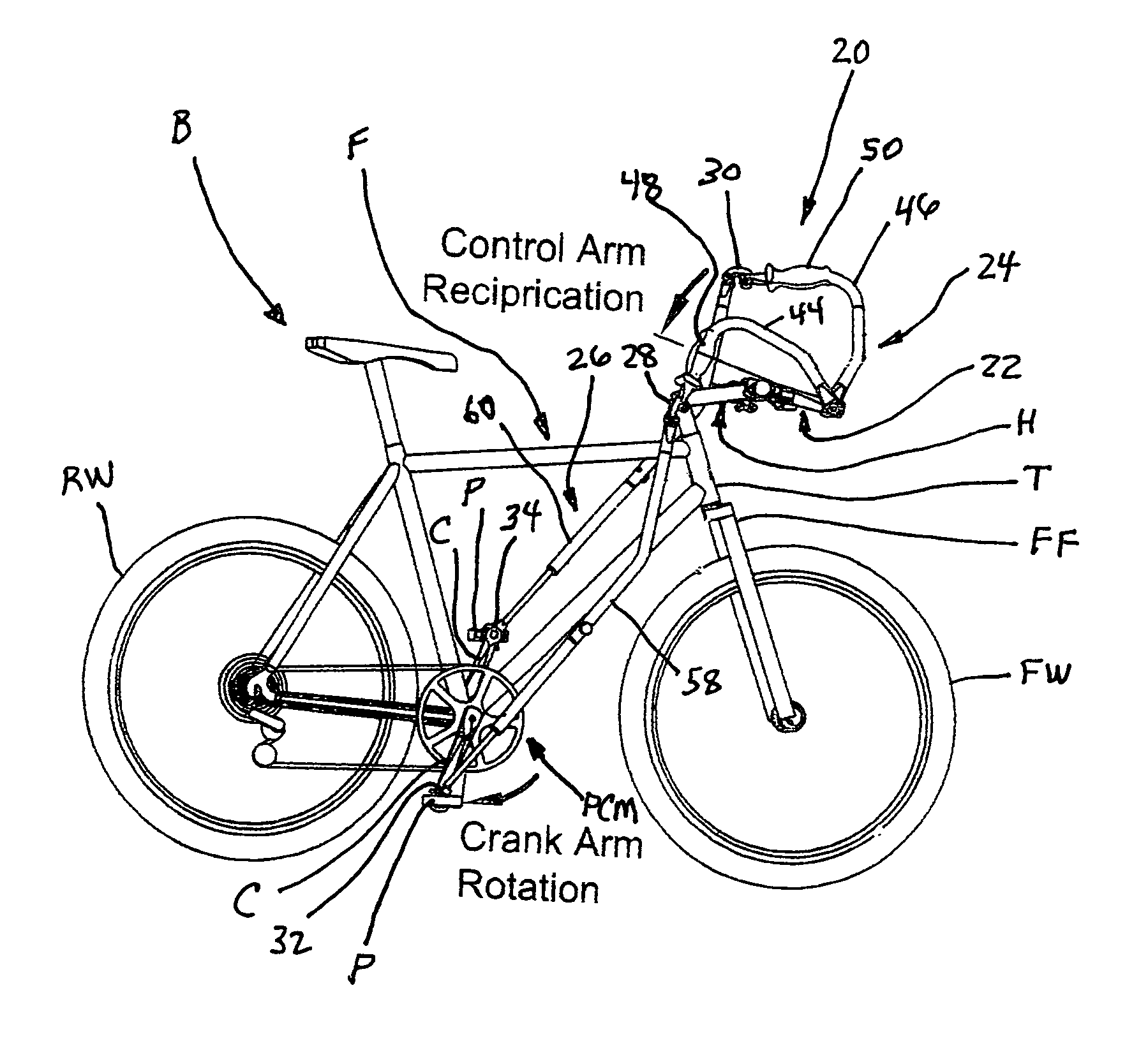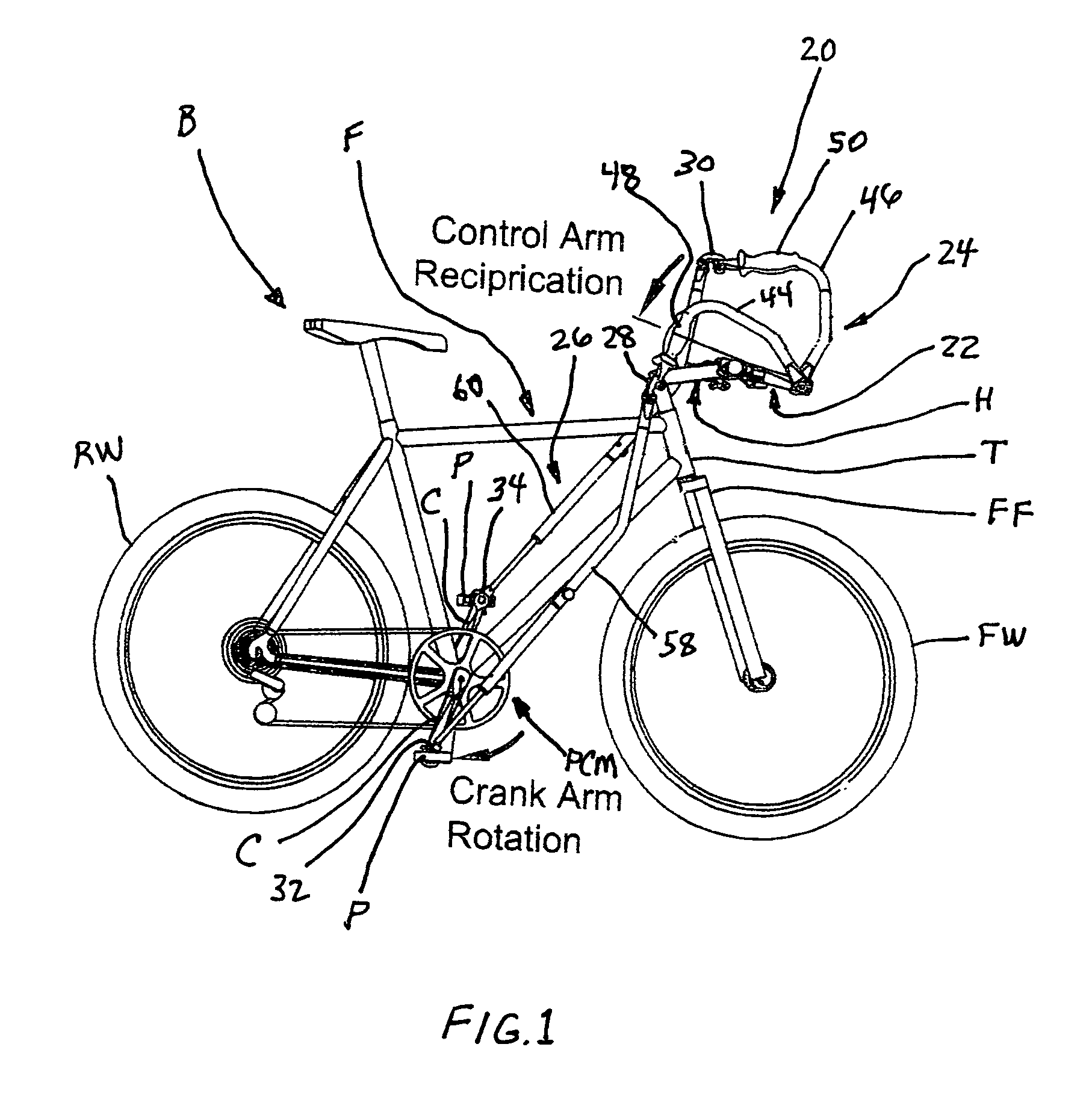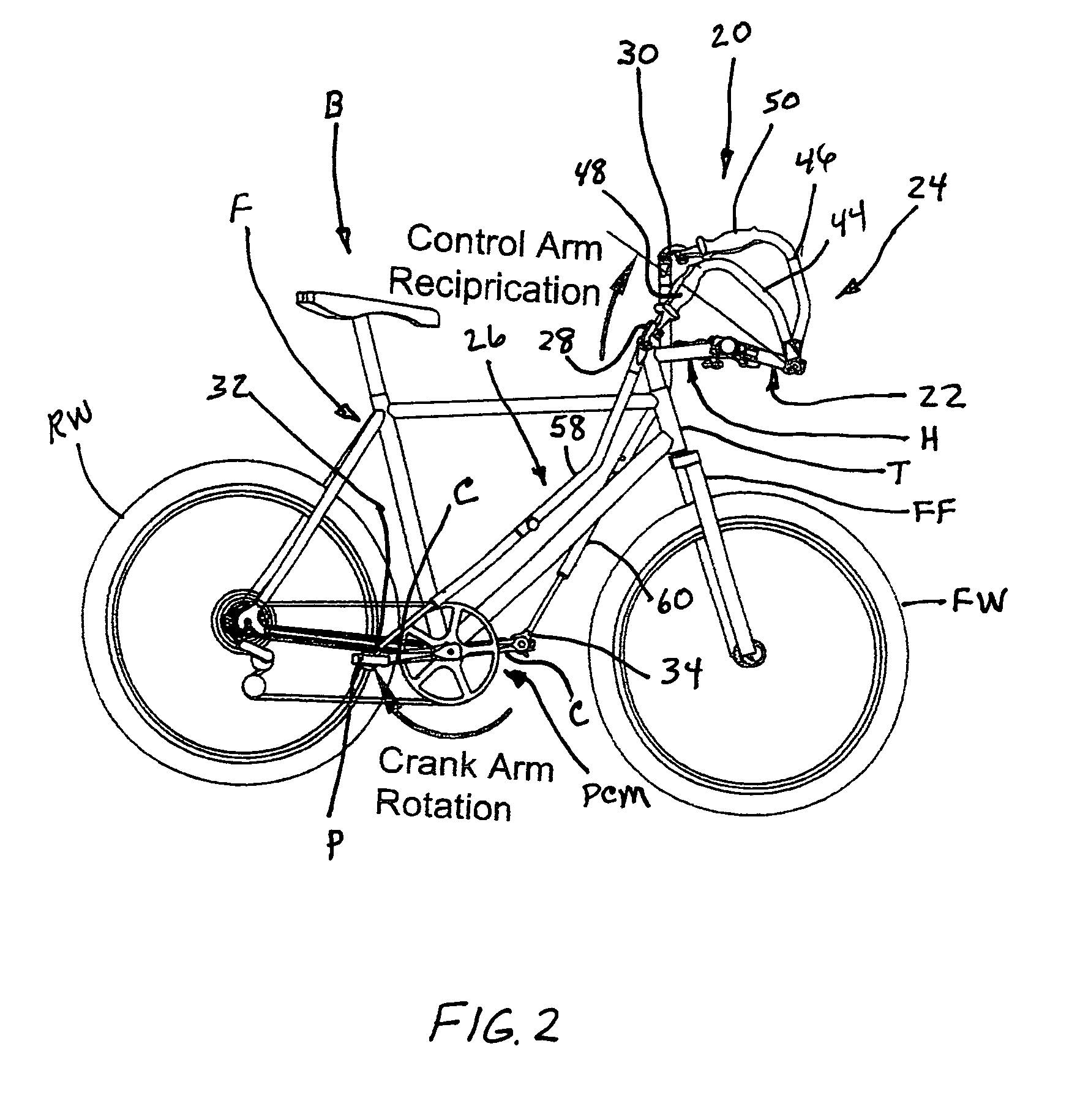Bicycle arm-drive apparatus
a technology of arm-drive and bicycle, which is applied in the direction of rider propulsion, vehicle components, transportation and packaging, etc., can solve the problems of affecting normal bicycle pedaling and steering operation, affecting the adaptability and effectiveness of arm-drive designs, and affecting the normal operation of bicycle pedaling and steering, so as to avoid instability and be easily removed from the bicycle
- Summary
- Abstract
- Description
- Claims
- Application Information
AI Technical Summary
Benefits of technology
Problems solved by technology
Method used
Image
Examples
Embodiment Construction
[0022]Referring to the drawings, and particularly to FIGS. 1-3, 4A and 4B, there is illustrated an exemplary embodiment of the arm-drive apparatus of the present invention, generally designated 20, for use by the operator of a conventional bicycle B or similar pedal driven machine. The bicycle B has a fore-and-aft main frame F, a head tube T fixedly connected on the forward end of the main frame F, a handlebar assembly H pivotally slotted into the head tube T, a front fork FF fixedly connected to the bottom end of the handlebar assembly H below the head tube T, a front wheel FW rotatably mounted to the front fork FF, a pair of pedal crank arms C rotatably mounted to the frame F at an intermediate bottom location thereon, pedals P rotatably mounted to shafts S attached to the ends of the pedal crank arms C. The pedal crank arms C rotatably drive the pedal crank mechanism PCM which in turn drives a rear wheel RW of the bicycle B and thereby propels the bicycle B.
[0023]The arm drive ap...
PUM
 Login to View More
Login to View More Abstract
Description
Claims
Application Information
 Login to View More
Login to View More - R&D
- Intellectual Property
- Life Sciences
- Materials
- Tech Scout
- Unparalleled Data Quality
- Higher Quality Content
- 60% Fewer Hallucinations
Browse by: Latest US Patents, China's latest patents, Technical Efficacy Thesaurus, Application Domain, Technology Topic, Popular Technical Reports.
© 2025 PatSnap. All rights reserved.Legal|Privacy policy|Modern Slavery Act Transparency Statement|Sitemap|About US| Contact US: help@patsnap.com



